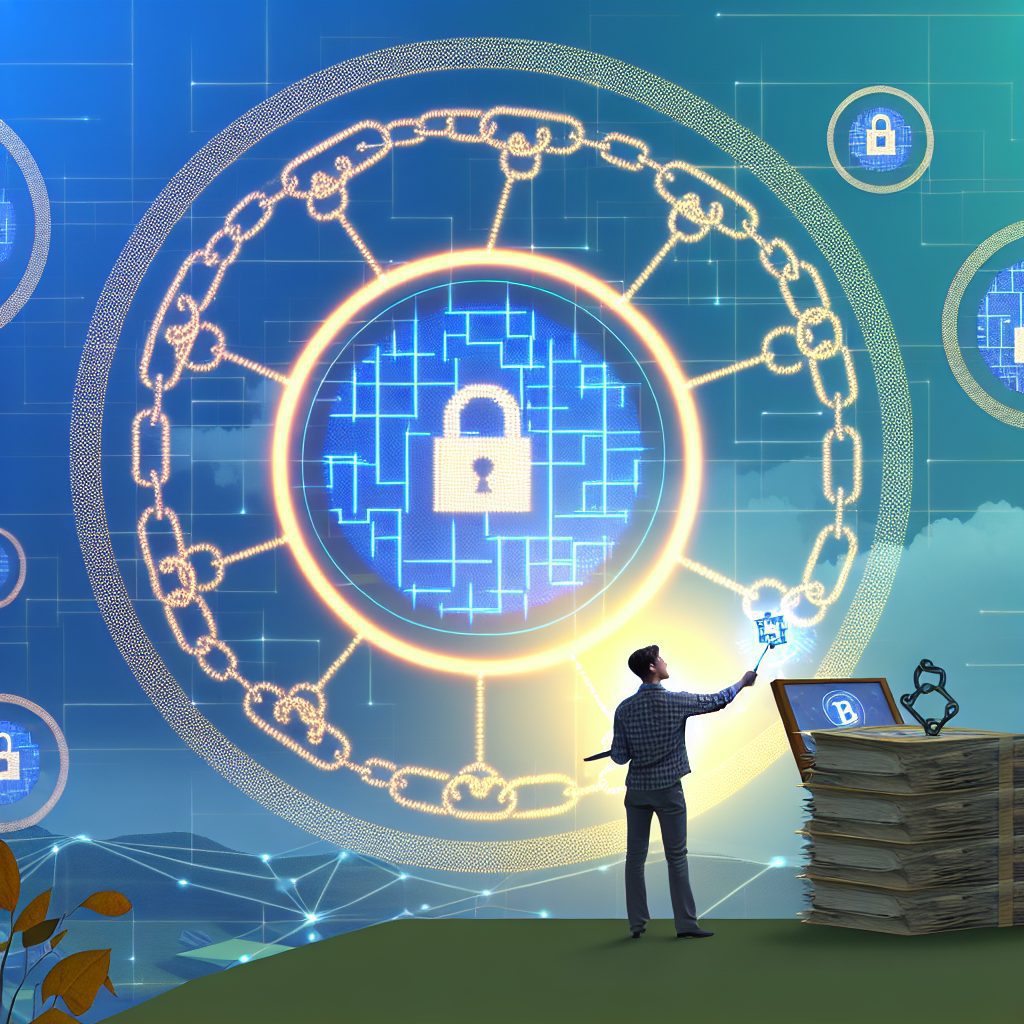How Blockchain Shapes Digital Ownership in the Cryptocurrency Industry
The concept of digital ownership has evolved significantly with the advent of blockchain technology. This revolutionary technology has transformed how we perceive ownership, especially in the cryptocurrency industry. By providing a decentralized and transparent framework, blockchain enables individuals to own, trade, and manage digital assets securely. This article delves into the intricate relationship between blockchain and digital ownership, exploring its implications, benefits, and real-world applications.
Understanding Blockchain Technology
At its core, blockchain is a distributed ledger technology that records transactions across multiple computers. This ensures that the recorded transactions are immutable and transparent. Each block in the chain contains a list of transactions, and once a block is filled, it is added to the chain in a linear, chronological order. This structure provides several key features:
- Decentralization: Unlike traditional databases controlled by a single entity, blockchain operates on a peer-to-peer network, reducing the risk of central points of failure.
- Transparency: All transactions are visible to participants in the network, fostering trust among users.
- Security: Cryptographic techniques ensure that data is secure and tamper-proof.
- Immutability: Once recorded, transactions cannot be altered or deleted, providing a reliable history of ownership.
The Concept of Digital Ownership
Digital ownership refers to the rights and control an individual has over digital assets. In the context of the cryptocurrency industry, this includes cryptocurrencies, tokens, and other digital assets. Traditional ownership models often rely on intermediaries, such as banks or financial institutions, to verify and manage ownership. However, blockchain technology disrupts this model by allowing individuals to have direct control over their assets.
How Blockchain Facilitates Digital Ownership
Blockchain technology reshapes digital ownership in several ways:
1. Tokenization of Assets
Tokenization is the process of converting physical or digital assets into digital tokens that can be traded on a blockchain. This process allows for fractional ownership, making it easier for individuals to invest in high-value assets. For example:
- Real Estate: Platforms like RealtyBits enable users to invest in real estate properties through tokenized shares, democratizing access to real estate investments.
- Art: Companies like Artory use blockchain to create digital certificates of authenticity for artworks, allowing artists and collectors to prove ownership and provenance.
2. Decentralized Identity Management
Blockchain can provide a secure and verifiable way to manage digital identities. Users can control their personal information and share it selectively, reducing the risk of identity theft. Projects like uPort are pioneering decentralized identity solutions that empower users to manage their identities on the blockchain.

3. Smart Contracts
Smart contracts are self-executing contracts with the terms of the agreement directly written into code. They automate processes and ensure that ownership transfers occur only when predefined conditions are met. This technology enhances trust and reduces the need for intermediaries. For instance:
- Supply Chain Management: Companies like IBM use smart contracts to track the ownership and movement of goods in supply chains, ensuring transparency and accountability.
- Digital Art: Artists can sell their work as non-fungible tokens (NFTs) using smart contracts, ensuring they receive royalties on future sales.
4. Enhanced Security and Control
Blockchain provides enhanced security for digital assets. Users have private keys that grant them access to their assets, ensuring that only they can control their ownership. This eliminates the risk of unauthorized access and fraud, which are prevalent in traditional ownership models.
Real-World Applications of Blockchain in Digital Ownership
Several industries are leveraging blockchain technology to redefine digital ownership:
1. Financial Services
The financial sector has been one of the earliest adopters of blockchain technology. Cryptocurrencies like Bitcoin and Ethereum have created new forms of digital ownership, allowing users to hold and transfer value without intermediaries. Additionally, decentralized finance (DeFi) platforms enable users to lend, borrow, and trade assets directly on the blockchain.
2. Gaming
The gaming industry is experiencing a revolution with the introduction of blockchain-based games. Players can truly own in-game assets, such as skins, weapons, and characters, as NFTs. Games like Axie Infinity allow players to earn cryptocurrency by playing, creating a new economy around gaming.
3. Intellectual Property
Blockchain technology is transforming how intellectual property rights are managed. Artists, musicians, and content creators can register their work on the blockchain, providing proof of ownership and enabling them to receive royalties directly from consumers. Platforms like OpenSea facilitate the buying and selling of digital art and collectibles, ensuring creators are compensated fairly.
4. Supply Chain Management
Blockchain enhances transparency and traceability in supply chains. Companies can track the ownership and movement of goods from production to delivery, ensuring authenticity and reducing fraud. For example, Walmart uses blockchain to trace the origin of food products, improving food safety and accountability.
Challenges and Limitations of Blockchain in Digital Ownership
Despite its potential, blockchain technology faces several challenges that may hinder its widespread adoption:
1. Scalability
Many blockchain networks struggle with scalability issues, limiting the number of transactions that can be processed simultaneously. This can lead to delays and increased transaction costs, particularly during peak usage times.
2. Regulatory Uncertainty
The regulatory landscape surrounding blockchain and cryptocurrencies is still evolving. Governments worldwide are grappling with how to regulate digital assets, which can create uncertainty for users and businesses.
3. User Experience
The complexity of blockchain technology can be a barrier for mainstream adoption. Users often find it challenging to manage private keys and navigate decentralized applications (dApps). Improving user experience is crucial for broader acceptance.
Future Trends in Blockchain and Digital Ownership
The future of blockchain technology and digital ownership is promising, with several trends emerging:
1. Increased Adoption of NFTs
Non-fungible tokens (NFTs) are gaining traction across various industries, from art to real estate. As more creators and businesses recognize the value of digital ownership, the NFT market is expected to grow significantly.
2. Integration with IoT
The Internet of Things (IoT) and blockchain are poised to create new opportunities for digital ownership. Devices can be assigned unique identities on the blockchain, enabling secure ownership and management of IoT assets.
3. Enhanced Interoperability
As multiple blockchain networks emerge, interoperability will become increasingly important. Solutions that allow different blockchains to communicate and share data will enhance the user experience and expand the possibilities for digital ownership.
FAQs about Blockchain and Digital Ownership
What is digital ownership?
Digital ownership refers to the rights and control an individual has over digital assets, such as cryptocurrencies, tokens, and digital files.
How does blockchain ensure secure ownership?
Blockchain uses cryptographic techniques to secure transactions and ownership records, ensuring that only the rightful owner can access and control their assets.
What are NFTs?
Non-fungible tokens (NFTs) are unique digital assets that represent ownership of a specific item or piece of content on the blockchain.
Can blockchain be used for real estate ownership?
Yes, blockchain can facilitate real estate ownership through tokenization, allowing individuals to invest in properties and manage ownership securely.
What are the challenges of using blockchain for digital ownership?
Challenges include scalability issues, regulatory uncertainty, and the complexity of managing blockchain-based assets.
Conclusion
Blockchain technology is fundamentally reshaping the concept of digital ownership in the cryptocurrency industry. By providing a secure, transparent, and decentralized framework, blockchain empowers individuals to take control of their digital assets. As the technology continues to evolve, its applications will expand across various sectors, creating new opportunities for ownership and investment. For the latest updates on cryptocurrency news and price tracking, visit Bitrabo. Stay connected with me on social media: X, Instagram, Facebook, Threads.
Disclaimer: The information provided in this article is for informational purposes only and should not be considered financial advice. Always conduct your own research before making investment decisions.
The Crypto Watchlist of the Week 🔎
Subscribe to receive expert-curated projects with real potential—plus trends, risks, and insights that matter. Get handpicked crypto projects, deep analysis & market updates delivered to you.


